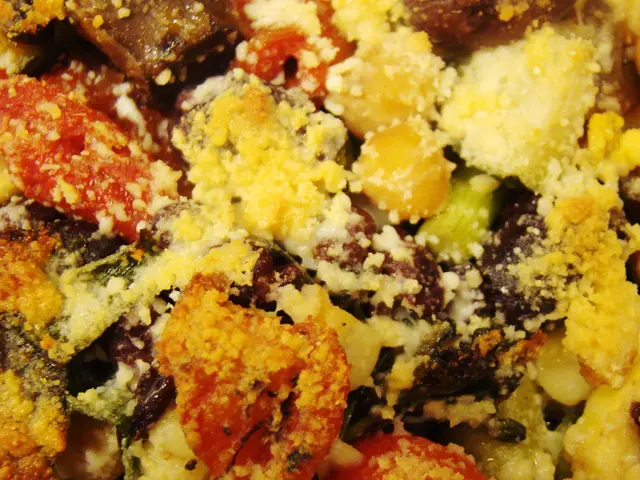Ensuring Safety in Edible Produce: Guidelines for Fruits and Vegetables
In the world of fresh produce farming, maintaining food safety and quality is paramount. A variety of best practices, encompassing personal hygiene, animal management, water usage, and facility sanitation, are crucial in preventing microbial contamination. These practices are comprehensively covered under Good Agricultural Practices (GAP) and other food safety guidelines.
**Personal Hygiene**
Workers are encouraged to follow stringent handwashing protocols, especially after using the restroom or handling animals or soil. Clean protective clothing and gloves should be used to minimise the risk of transferring pathogens. Sick workers should be restricted from fields, and employees should receive proper training on hygiene standards to reduce contamination risks.
**Animal Management**
Preventing direct contact between livestock, wildlife, and produce fields is essential to avoid fecal contamination. Manure should be managed carefully by composting properly before field application and preventing runoff into water sources. Buffer zones between animal housing and production areas can help reduce microbial transfer. Regular monitoring and control of pests and wildlife that might carry pathogens onto the farm are also essential.
**Water Usage**
Using safe and tested water sources for irrigation, washing, and handling produce is vital. Drip irrigation is preferred over sprinkler irrigation to minimise the risk of contaminating produce surfaces. Regular monitoring of water quality for microbial contamination is necessary to prevent pathogens from entering crops through irrigation. Careful management of livestock waste is essential to avoid contamination of water bodies used on the farm.
**Facility Sanitation**
Regular cleaning and sanitising of all equipment and facilities used in produce handling and storage is crucial to minimise contamination. Maintaining hygienic conditions in packing and storage areas can help reduce microbial growth. Regular microbial testing of produce samples and surfaces during peak seasons can detect contamination early. Comprehensive training and audits ensure adherence to sanitation protocols.
These practices form part of the broader framework of GAP, which aims to reduce microbial hazards at every stage of production to ensure safe, high-quality fresh produce. Farms often seek GAP certification to meet regulatory and buyer expectations, demonstrating their commitment to food safety.
Other key practices include:
- Horses should not be in fresh produce fields, vineyards, or orchards during the growing season. - Each producer should provide a sanitation training program for all employees. - Hand washing stations should be available on premises. - Standard cleaning procedures for equipment may include scrubbing to remove particles and sanitising with a chlorine solution. - Prevention is the first and most important component of a food safety program.
The farming industry is continually striving to ensure the safety and quality of fresh produce, and adhering to GAP and related guidelines is a significant step towards achieving this goal.
- The provision of hygiene training for employees is essential to reduce contamination risks in fresh produce farming.
- To prevent microbial transfer, maintaining a buffer zone between animal housing and production areas is recommended.
- Using safe and tested water sources for irrigation, washing, and handling produce is crucial to minimize contamination risks.
- Regular monitoring of water quality and careful management of livestock waste are necessary to prevent pathogens from entering crops through irrigation.
- Comprehensive training and audits ensure correct implementation of sanitation protocols in facilities used for produce handling and storage.
- Beyond GAP, other key practices include keeping horses away from fresh produce fields during the growing season, providing a sanitation training program for all employees, and having hand washing stations available on premises.




